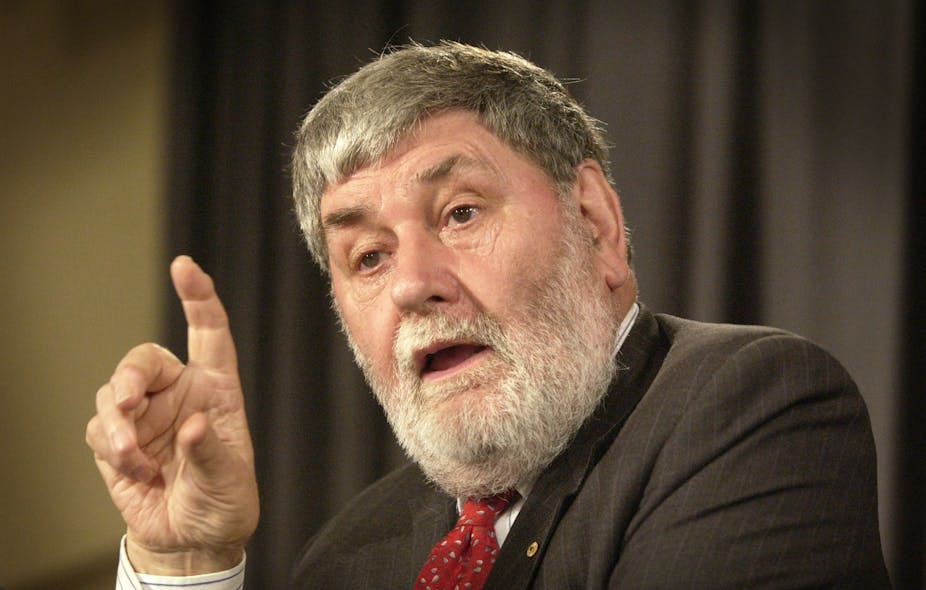Queensland has developed a tradition of political swings that are far greater than the national average. Labor held only one Queensland House of Representatives seat in 1975 and in 1996 only two.
The major problem for the ALP is that it is becoming increasingly disconnected from the community at large, or even Labor voters.
This is partly because of the oligarchic structure of the Party in which control has passed to a small group of apparatchiks, sometimes called the nomenklatura, which dominates state and national conferences, people whose livelihood depends on the party itself or affiliated unions.
At the December 2011 ALP National Conference, if the question had been asked, and an honest answer given: “Hands up all of you who are here because you work for the Party, work in the offices of affiliated trade unions, or as staffers for MPs, Senators and Ministers”, more than 80% of the hands would have gone up. Of course, there was never any possibility that the question would be asked.
Delegates to conferences are not shop assistants, builders’ labourers or sheet metal workers, but officials of the appropriate unions, often with degrees, not part of the workforce that they ostensibly work for, looking eagerly for the possibility of political advancement.
The development of national factions constitutes, in effect, the privatisation of the party, with factional warlords engaged in carving up the assets, rewarding factional loyalty and promoting an almost feudal code of allegiance. Factions are essentially executive placement agencies.
Elections offer voters relatively limited choices, like choosing between KPMG and PWC, two management teams with a convergent set of operating methods, who use the same techniques.
The politics (that is, serious debate on ideological issues) has virtually dropped out of politics and has been replaced by a managerial approach. The use of focus groups and obsessive reliance on polling and the very short news cycle means that the idea of sustained, serious, courageous analysis on a complex issue – the treatment of asylum seekers, for example – has become almost inconceivable. Political leaders now look for a slogan, a mantra, and repeat it endlessly, staying “on message”.
Under present arrangements, there is no possibility that Gough Whitlam could have been preselected for a winnable seat unless he had been a loyal factional member – and the same would have been true of Gareth Evans, John Button, Neal Blewett, Don Dunstan or Geoff Gallop.
The central problem for the renewal of Labor is resolving the tensions between an expanding society and a contracting base.
I have called this “the 1954 problem”. 1954 was the year in which membership of trade unions began to contract as a proportion of the total labour force. After 58 years, it is starting to look like a trend. In the lifetime of the Prime Minister, the ALP as an organisation has become increasingly unrepresentative of the community at large, and even of Labor voters.
What happens when trade union membership falls below 10 per cent of the labour force? Will that lead to a rethinking of the structural relationship between the ALP and the affiliated unions? Rodney Cavalier published figures in his book Power Crisis about ALP branch membership in New South Wales: ALP branch members who are in affiliated unions number 2,500, just 0.65% of the membership of affiliated unions.
Cavalier argues that most state ALP branches would not be able to satisfy the “breath on the mirror” test. But much of the criticism that can be levelled at the ALP organisationally would also be true of the Liberal Party. There too, branch membership is contracting, ageing and factionalised.
It is disillusioning to have to admit that electoral success does not seem to be related to the health of party structures. The ALP was winning elections in 2007-2009 even though party membership was tiny, ageing and ineffective. Compulsory voting, public funding of election campaigns and generous support from vested interests, if they think they are on a winner, means the rank and file don’t need to organise chook-raffles or drag out the vote on polling day.
But if there was one thing that I could recommend in the hope – by no means a certainty – that the ALP’s fortunes would be revived if would be to transform the party from being an oligarchy to a democracy, to ensure that branch membership actually meant something.
But I’m not holding my breath. The people who currently own the party won’t divest themselves of their power – and voters can lump it.

